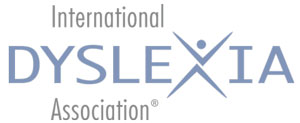Share This: 


By Terri Hessler
October 2017
Do you feel like you have a pretty good grasp on all the –ologies involved in your child’s academic evaluation and profile? How about morphology? If that one is iffy, rest assured, you’re not alone (Nagy, Carlise, & Goodwin, 2013). Of all the topics in the area of dyslexia instruction, this one may be the least familiar to the most people. Perhaps you know it has something to do with vocabulary, but it also has to do with how words are spelled today, why they are spelled that way, and how they are built or structured, connecting them to their historical development.
This is important information for non-intuitive learners, like many students with dyslexia, who need to learn morphological constructs—such as prefixes, suffixes, and roots—in an explicit, systematic, and structured way. It is also important information for parents/family members to have a general understanding of morphology because inevitably, you will get questions such as, “Why does bicycle mean two wheels but biology doesn’t mean two –ologies? The answer is because the prefix in biology is not bi– (two), it is bio– (life). (By the way, -ology means the study of something.) And this spelling stumper: “If I’m supposed to double the f, l, s, or z, at the end of short (that is, one syllable) words, after a short (that is, closed) vowel, why is bus spelled b–u–s and not b–u–s–s?” Answer? Because buss is a word that came into English around the mid-1500s and it means kiss; and bus entered our language 300-some years later, shortened from omnibus.
There are more spelling issues related to vocabulary, and when parents and family members are aware of the morphology of words, they can be both supportive and instructive. For example, a student may remember that chronology has something to do with time, but she may not remember it is a Greek root, but with that prompt from a parent, she would remember that the /k/ phoneme (or sound) should be spelled with the grapheme ch (a grapheme is a letter or letters that represent a phoneme).
If you would like a brief, but great, introduction to morphology—and its importance to non-intuitive and intuitive learners alike, follow the link to the International Dyslexia Association’s new fact sheet Morphological Awareness: One Piece of the Literacy Pie.
Here are some other useful resources:
- Words: Integrated Decoding and Spelling Instruction Based on Word Origin and Word Structure, 2nd Ed. by Marcia Henry (Pro-Ed, Inc. 2010; www.proedinc.com). Although written for use with 3rd graders on up, it can be adapted for younger grades, and is also an excellent tutorial for anyone who could use a refresher, needs some gaps filled in, or who just did not get the literacy information needed to help support or instruct a student with dyslexia struggling to learn to read. Unit 1 covers letter-sound correspondence; Unit 2 covers syllable patterns; and Units 3 and 4 really get into the meat of morphology.
- “Teaching Morphology: Enhancing Vocabulary Development and Reading Comprehension” by Mary Stowe, M.Ed.
- Because morphology has so much to do with spelling, the spelling fact sheet available from the IDA web site may be helpful – https://dyslexiaida.wpengine.com/spelling/
- The Yale Center for Dyslexia & Creativity is an invaluable site where you can find “How Parents Can Build a Word Rich Life for Dyslexics.”
- If you are interested in how teachers are approaching morphology instruction for English language learners in relation to Common Core standards, check out this publication.
- http://www.etymonline.com/ is an etymology site where you can find out a word’s origin, the approximate time it first appeared in writing, and its meaning, as well as other dictionary-type information.
- You could spend all day at wordworkskingston.com. This is a landing page from which you can branch out depending on what you are looking for. Information rich!
- “Investigations” Forum is a compilation of words that are hot-linked to more information about the history and relatives of the words. It is compiled by the site founder, Pete Bowers, with help from other teachers and students at the Nuevo School. There are explanatory videos with word-print overlays, PDFs, and enrichment material (e.g., video and text of President Obama’s eulogy for Reverend Pinckney in the study of <grace> and <subjugation>).
- Have you seen a word mini-matrix like this?
These mini-matrices are great for depicting word building by showing prefixes, roots/bases, and suffixes. This interactive site allows you to build your own! http://www.neilramsden.co.uk/spelling/matrix/temp/index.html
References
Henry, M. K. (2010). Words: Integrated decoding and spelling instruction based on word origin and word structure (2nd ed). Austin, TX: Pro-Ed., Inc.
Nagy, W. E., Carlise, J. F., & Goodwin, A. P. (2013). Morphological knowledge and literacy acquisition. Journal of Learning Disabilities, 47(1), 3–12.
Dr. Terri Hessler is an associate professor of special education at The Ohio State University at Newark. Her research interest involves interventions to improve academic performance for children with high incidence disabilities, especially those with dyslexia, as well as those considered at risk for being identified as having high incidence disabilities. Prior to her experience in higher education, she taught English/language arts to adolescents and was a resource teacher for adolescents with specific learning disabilities.
Copyright © 2017 International Dyslexia Association (IDA). Opinions expressed in The Dyslexia Connection and/or via links do not necessarily reflect those of IDA.
We encourage sharing of Dyslexia Connection articles. If portions are cited, please make appropriate reference. Articles may not be reprinted for the purpose of resale. Permission to republish this article is available from info@dyslexiaida.org.



